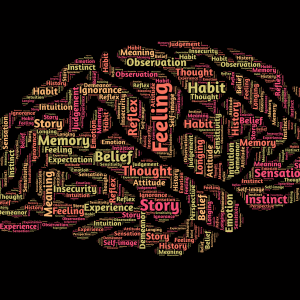The “New Normal” for Higher Education After COVID-19
Letters
SRQ DAILY
SATURDAY JUN 5, 2021 |
BY RYAN LUFKIN
The past year of navigating the pandemic has accelerated many educational trends already gaining speed. One of the most important to the future is blended learning, which combines face-to-face teaching and online instruction. It’s supported by a technology framework that helps teachers organize course content, communication and common workflows. Perhaps most importantly, it builds on the strengths of both approaches — in person and online — ideally offering the flexibility of remote learning with the engagement of face-to-face interactions.
COVID-19 was the catalyst for propelling many types of everyday activities into a solely remote realm. Now as we create a blueprint for the “new normal” of many essential functions like school, adopting a consistent approach to technology-enhanced learning across the entire college or university is critical to addressing the next wave of challenges facing education.
Over the past decade, higher education in North America has been battling a troubling trend -- decreasing enrollment. As a result we’ve seen school closures, leaner budgets and a growing discourse on what steps higher ed should take to turn the tide.
This is where amidst all the stress and uncertainty the pandemic has created some bright spots; it’s created opportunities to support learners in new and evolving ways. There is currently a surge in demand to upskill and reskill adult learners. Over the past 14 months, many have decided or been forced to decide to change career paths. Doing so often doesn’t necessitate obtaining a traditional two- or four-year degree. For many, such programs are simply too resource- or time-intensive.
We must build new avenues for adult learners to cultivate the job and life skills required to shift career paths, and that work is happening now in companies and educational institutions nationwide. There is a lot of discussion on precisely what these varied new approaches will look like to support the new “continuous learner.” What is evident is that blended learning will be a key component. The technology underpinning equips faculty with the tools and support they need to support an ever-changing landscape. A blended course can more easily be adapted to new modalities to serve different types of learners.
One of the most common pieces of feedback edtech developers receive is about a subject we have the least control over, “make my professors use the technology more...make them use it better.” Students want a more consistent user experience between how their teachers use technology. We call that UX in the software world. Having a good UX results in a number of positive outcomes, such as students using feedback channels more often, consistent assignment workflows and leveraging features like to-do lists more frequently and effectively.
Well-respected figures in education like John Spencer have examined how educators can utilize the UX design approach to build more engaging and impactful courses. The basic tenets of UX design aren’t rocket science; they’re principles like: design for your users (not for yourself), provide clear workflows, gather feedback and use data.
Whether they’re taking Algebra 1 or Advanced Multivariable Calculus, it’s a reasonable expectation for students to get a similar experience navigating through their classes online, regardless of if it’s general ed, an upper-division course in their major, or even a fully remote course they’re taking as part of a non-degree certificate program from the same institution. The key here is that institutions must apply this UX design mentality collectively across all courses, programs and departments. Doing so requires prioritizing planning, instructional design support, utilizing “blueprint” courses and offering templates. Perhaps most importantly, we must prioritize the training of and support for less tech-savvy educators to make the switch.
Data in education is a delicate subject. First and foremost, we must protect students’ right to privacy. At the same time, when used consciously and appropriately, data can greatly improve the quality of education. Striking that balance is both tricky and imperative.
We know from the broader use of technology that blind spots occur when a piece of technology is not adopted consistently across the user base. From those blind spots can emerge false narratives, which then result in an organization's inability to identify issues while they’re still addressable.
While it’s not the primary reason to implement blended learning, one added benefit is that it provides colleges and universities with much-needed, high-quality data to help them better make critical divisions to support their student populations. This data-driven decision making will be essential to help schools address challenges like declining enrollment and shifting student dynamics. Here too consistency matters. If classroom data — the most impactful and timely data we can have on our students — isn’t being collected consistently, we’re left with a woefully incomplete picture of our students.
As we turn our attention to life after COVID-19 and forging a new normal for our students, we have the opportunity to define what comes next. When used consciously and consistently, blended learning has the power to support our nation’s learners and ensure our academic institutions can continue to provide a high-quality education no matter what the future holds.
Ryan Lufkin is Senior Director of Product Marketing for Higher Education Instructure, the makers of Canvas.
« View The Saturday Jun 5, 2021 SRQ Daily Edition
« Back To SRQ Daily Archive











